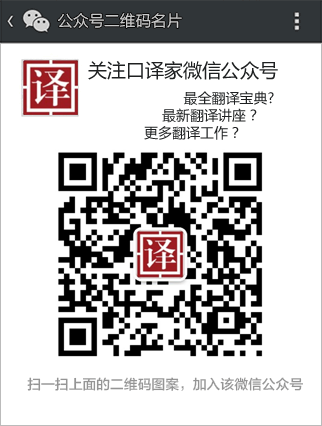如何翻译法律中的“条、款、项、目”(2)
把Section译为节,是因为section这一概念有时很大,它比article(条)还大,若译为款、项、目过小,译为章、编则又过大。例如,在《与贸易有关的知识产权
把Section译为“节”,是因为“section”这一概念有时很大,它比“article”(条)还大,若译为“款”、“项”、“目”过小,译为“章”、“编”则又过大。例如,在《与贸易有关的知识产权协定》(Agreement on Trade-Related Aspects of Intellectual Property Rights,简称Trips协议)中,第二部分《关于知识产权效力、范围和使用的标准》(Standards Concerning the Availability,Scope and Use of Intellectual Property Rights)包括8个section,第三部分《知识产权的实施》(Enforcement of Intellectual Property Rights)包括5个section,每个section又包括若干条article。此时,译为“节”最好。事实也如此,例如,第二部分中的“SECTION 1: COPYRIGHT AND RELATED RIGHTS”,中文翻译便将之译为了“第一节:版权和相关权利”。关于这点,读者可参看北大法律信息网,Trips协议相关中、英文内容。
把section译为“条”,这点很好理解。当section译为“条”时,subsection则译为“款”。根据A Dictionary of the Law (Clapp, 2000: 389),Section: a subdivision of a statute or document, represented by the symbol§(or§§for “section”). Most statutes and codes are divided into sections.另外,subsection: A part within a section of an act .Each section in a Statute may be further divided into subsections…A subsection is denoted as a number with brackets. For example, s.78(1)of the Trade Practices Act would read as section 78 subsection 1.(陈忠诚,2000:605),上述解释说明,section可译为“条,”subsection则可译为“款”。此外,经笔者检索,加拿大法《北美法案》(British North America Act)、《英国货物买卖法》(SALE OF GOODS ACT 1979)等法律条文中均使用Section来表示“条”,subsection表示“款”。
由于人们常将上述《美国宪法》中第1-4条(article)中数目不等的“section”译为“款”,而很少有人将这里的“section”译为“节”,所以,将“section”译为“款”,已经是人们约定俗成的一种情形。翻开今天的“外国法制史”类教材,我们可以发现这一事实(何勤华,1998:55;由嵘,2000:355)。总之,英汉法律翻译中的“section”是个相对的词,翻译的时候,译者需发挥主观能动性,选择合适的对应词为好。但是,同一篇法律条文中,必须遵循“译名同一律”,不可毫无规矩。
(3)关于paragraph, subparagraph的翻译。笔者认为,应将paragraph, subparagraph分别译为“条”、“款”。以往的翻译中,人们也大都将paragraph,译为了“条”。这点问题不大。Trips 协议中,第3条、第64条中有这样的例子。
1. Any Member availing itself of the possibilities provided in Article 6 of the Berne Convention (1971) or paragraph 1 (b) of Article 16 of the Rome Convention shall make a notification as foreseen in those provisions to the Council for TRIPS.
任何利用《伯尔尼公约》第6条或《罗马公约》第16条第1款(b)项规定的可能性的成员,均应按这些条款中所预想的那样,向TRIPS理事会做出通知。
2. Subparagraph 1 (b) and 1 (c) of Article XXIII of GATT 1994 shall not apply to the settlement of disputes under this Agreement for a period of five years from the date of entry into force of the WTO Agreement.
自《WTO协定》生效之日起5年内,GATT 1994第23条第1款(b)项和(c)项不得适用于本协定项下的争端解决。
(4)其他词的翻译。
“Item”一词译做“目”非常合适。因为“Item”常常是subparagraph(项)下的一个部分。让我们来参考Black’s Law Dictionary (Garner 1999: 837)中对此的解释,Item: In drafting, a subpart of a text that is next smaller than a subparagraph. In federal drafting, for example, “(4)” is the item in following citation: Rule 19 (a) (1) (B) (4). Also termed clause in this sense.
这个解释最后提到了“clause”这个词。关于clause一词的翻译,笔者认为,除了可以将其译为“目”之外,更多的情形下应将其译为泛指意义上的“条款”。例如,《新英汉词典》(1985:208)中对“clause”这个词的解释就是“条款”、“款项”。此外,不少工具书也均认可“条款”这一译法(费曼,2004:245;薛波,2003:233)。比如,“clause of devolution”译为“义务承担条款”。限于本文讨论的范围,不再展开论述。

(责任编辑:admin)
- 旅游翻译[ 18-07-25 ]
- 翻译公司告诉你什么是外事口译[ 18-07-24 ]
- 毕业证翻译应该注意哪些细节性的问[ 18-07-21 ]
- 商务信函翻译中最易混淆的常用英语[ 18-07-18 ]
- 熟记五技巧,翻译不慌张![ 18-07-17 ]
- 翻译公司告诉你产品广告翻译的要领[ 18-07-14 ]
- 浅谈医学论文摘要翻译攻略[ 18-07-13 ]







